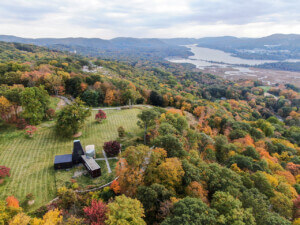As Detroit and Buffalo get set to take on two transformative park projects along their respective waterfronts, both cities have been generously backed by a philanthropic organization aiming to enhance green space and bolster community engagement. Today, the Ralph C. Wilson, Jr. Foundation announced its pledge to invest over $1.2 billion in the cities by 2035 in honor of its founder, the Buffalo Bills’ late owner, and his centennial birthday.
The Foundation is making a sizable donation to Western New York and Southeast Michigan—the two areas Wilson loved most—by committing a combined $200 million for upgraded parks and 250 miles of trails in the regions. A large chunk of that change will go directly to revitalizing LaSalle Park in Buffalo and West Riverfront Park in Detroit.
With a design already envisioned by Michael Van Valkenburgh Associates (MVVA) and David Adjaye, the latter parkland will give Michiganites long-desired, tangible access to the Detroit River. Though the 77-acre LaSalle Park has stretched across Lake Erie’s edge since the 1930s, it’s massive potential for further beautification and elevated programming could increase the quality of life for Buffalo residents and beyond.
Dave Enger, president of the Foundation, stressed that community involvement is the key to taking on these monumental landscape goals. “Foundations don’t build parks, communities do,” he said. “Our vision is really to support these wonderful projects and the people that have the vision.”
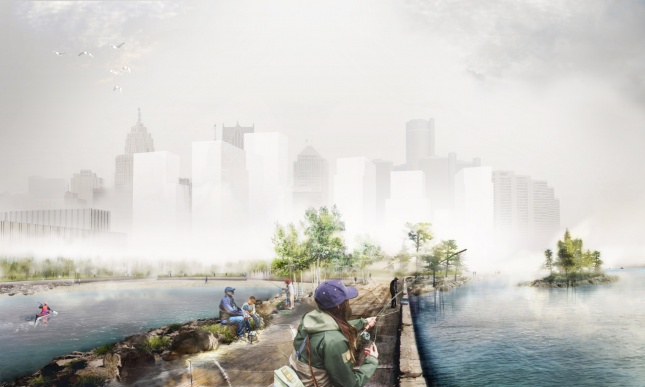
The design process is well underway for West Riverfront Park in downtown Detroit. Situated atop a former industrial piece of land, the 22-acre parkland will be a year-round destination for fishing, skating or swimming, sports, entertainment, and family gatherings. MVVA’s proposal was chosen over 80 other submissions in an international design competition to reimagine the park, which was transferred from private ownership to the Detroit Riverfront Conservancy in 2014.
Since their master plan was selected earlier this spring, MVVA has worked alongside the Conservancy and the Detroit Mayor’s office to garner feedback from locals and find out their personal ambitions for the park. The firm’s principal, Michael Van Valkenburgh, said his team especially loved talking to people aged 60 and older about their childhoods in Detroit—the places they loved and why. For many, the secluded Belle Isle was the only locale they could go to enjoy green space and the river at the same time. But that’s about to change thanks to these new ideas for downtown.
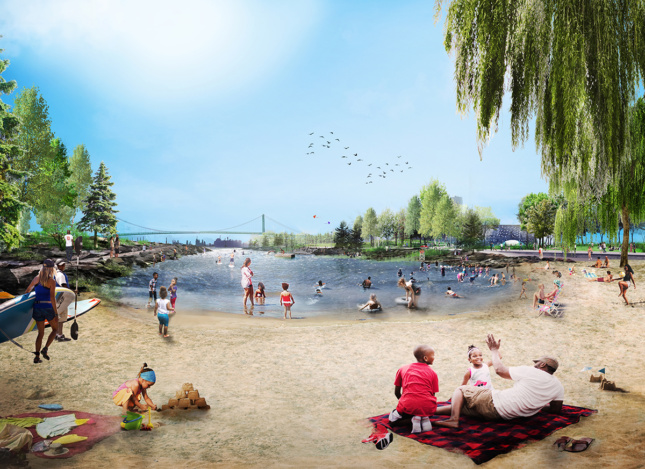
“Not every place in Detroit has what New York’s Brooklyn Bridge Park offers—a way to touch the water and put your toes in,” said Van Valkenburgh. “Because Detroit is so vast horizontally, we knew needed to add shock and awe to the design to get Detroiters who were far away to come to the water. Michiganders feel defined by and proud that the state is surrounded on three sides by the Great Lakes. We thought giving access to the water, through this cove and beach creation, would be a big draw.”
A construction start date hasn’t yet been announced for West Riverfront Park, but officials estimate it will be complete by 2022. Van Valkenburgh is sure the master plan will go through many design iterations before ground is broken and he’s excited about more community input.
“I’ve been going to public meetings since 1990,” he said. “These have been the most uplifting public meetings I’ve ever been a part of. People come with a real sense that this park is going to be a big lift for the city. They really want it.”
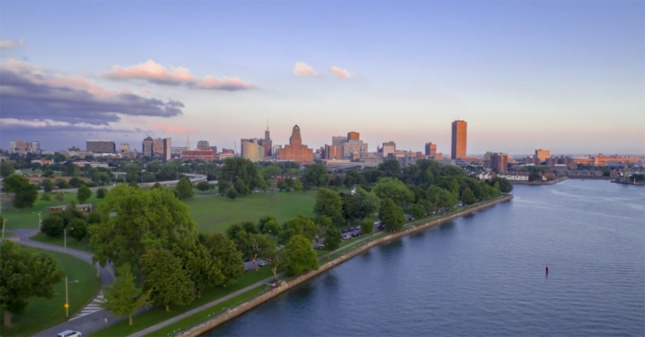
At the other end of Lake Erie is LaSalle Park in Buffalo. Though it’s a long-loved and well-utilized community treasure, city stakeholders agree that it could use significant improvements. In 1998, the city conducted a planning review to overhaul the expansive parkland and identify priorities for a new design and upgraded programming. That vision was never realized until the Regional Institute at the University of Buffalo began researching its history and surveying people through a project called Imagine LaSalle. A focus group even spent this summer exploring the park and visiting other famous green spaces in Chicago, Cincinnati, and New York for inspiration.
“The feedback has been tremendous so far,” said Brendan Mehaffey, executive director for the city’s Office of Strategic Planning. “Part of the mayoral administration’s core values is inclusion so we’ve talked to people from all backgrounds including low-income individuals, young professionals, business owners, and more.”
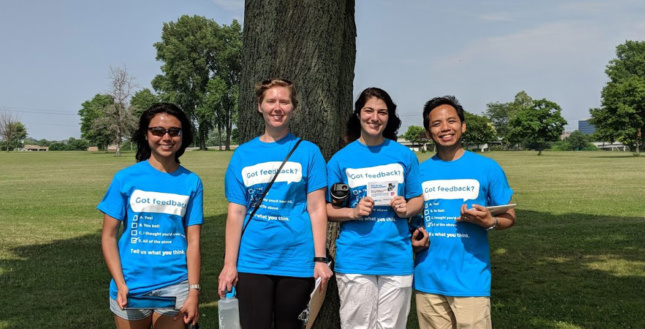
Community engagement is at the heart of both efforts in Buffalo and Detroit. Much like Imagine LaSalle, MVVA also transported a busload of teenagers to visit their Maggie Daley Park in Chicago, and other groups went to New York and Philadelphia. Mehaffey sees the connection between the two waterfront park projects, and the two cities in general, as vital to their respective successes.
“The Detroit team is much further into the design process than we are, so we’re delving into their research to try and discover best practices for building our own LaSalle Park,” he said. “I think that commonality between us is part of what the Wilson Foundation’s statement is going to make to the country.”
Enger also believes the two cities are inextricably important to one another—that’s why his organization has zeroed in on their combined futures. He emphasized that spurring economic development through green space is a key way to democratize the municipalities on a greater level.
“Where else in the United States are you going to find world-class parks in post-industrial cities that overlook international border crossings and feature some of the most magnificent sunrises and sunsets?” he said. “We think the total leverage of this project will be far greater than what our investment will bring.”










